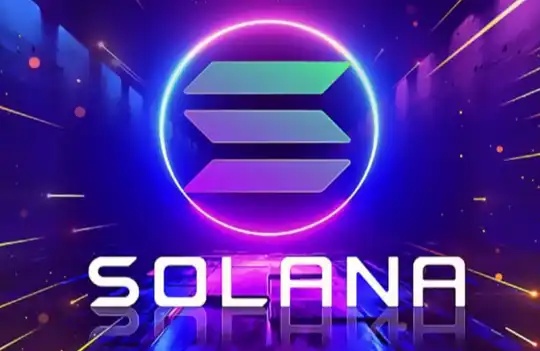The heat of the Curve ecosystem is rising again, and this project developed by the DAO must be paid attention to.
Recently, discussions about Curve have been very hot. With the continuous expansion and development of the ecosystem, Curve and Convex's "Lego play" are also increasing. Driven by the cryptocurrency market, the token prices of many Curve ecosystem projects have also seen significant increases in recent times. Among them, the most prominent performers are Concentrator, CLever, and Conic Finance, which have risen by nearly 500%, 300%, and 100%, respectively. Interestingly, the two projects with the largest increase, Concentrator and CLever, are both developed by the DeFi community AladdinDAO. This article will introduce the structure and main goals of AladdinDAO, as well as the Concentrator and CLever Lego mechanisms.
AladdinDAO
AladdinDAO is a collective value discovery community that aims to transfer the main body of cryptocurrency investment from venture capital to the development community by providing one-stop liquidity mining services. AladdinDAO's economic model adopts the controversial DeFi 2.0 game theory mechanism (BlockBeats note, for more information about DeFi 2.0, please read "APY 70,000%, DeFi 2.0 dominated by OHM forks"). The team hopes to motivate the community to continuously launch new high-quality projects through this mechanism. Currently, the ALD rebase interval is two weeks, the APY is maintained at around 10%, and nearly 360 DeFi yield strategies have been executed.
AladdinDAO aims to build a "triangular market" in the DeFi field, consisting of AladdinDAO itself, DeFi projects, and DeFi farmers. Community members or users enjoy one-stop liquidity mining services while providing liquidity for selected DeFi projects; the DAO is responsible for providing the best harvesting strategy projects for DeFi users; the "Boule" member group, composed of senior DeFi developers and players, mines and develops DeFi projects to share profits with the DAO community, and Boule members can also receive additional incentives for AladdinDAO governance token ALD.

Boule members are the absolute core of AladdinDAO, responsible for mining and developing new DeFi projects, and acting as headhunters to constantly recruit new DeFi talents for the community. At the same time, the DAO has established a reward and punishment mechanism for Boule members. For members who develop high-quality projects or attract top talents, the DAO community can provide corresponding token incentives and promotion paths. For underperforming Boule members, the system will lower their ranking and remove their Boule identity in the following cycle.
Concentrator
Concentrator is a Curve yield enhancer developed by AladdinDAO. It increases users' earnings on the Convex protocol by converting all Curve ecosystem yield assets into automatically compounded interest-bearing assets. Curve ecosystem applications and protocols have strong "nesting properties", which often lead to users' earnings being dispersed among various small assets, making it difficult to effectively leverage marginal utility.
The role of Concentrator is to package various Curve pool yield assets into generic interest-bearing assets and reinvest them in new DeFi harvesting strategies, in order to save user gas fees and improve capital efficiency. Currently, Concentrator mainly packages two types of assets, aCRV and aFXS, and the packaging certificates are based on Convex's cvxCRV and cvxFXS.
Users can deposit their Curve LP Tokens into their chosen strategy, and the Concentrator will automatically deposit them into various yield vaults in Convex. The rewards earned are packaged as aCRV or aFXS, which users can unlock at any time to obtain their earnings. Users can also exit in the form of blue-chip assets such as CVX, CRV, and ETH. According to official documentation, users can increase their yield by more than 20% through packaged enhanced yield.

Throughout the entire revenue process, Concentrator will charge users a standard fee of 10%. Each revenue strategy will have different withdrawal fees based on the standard fee, and the revenue from these fees will be distributed to the lock-up holders of CTR Token and the Concentrator treasury. CTR is the native token of Concentrator, and its mechanism is similar to Curve's veToken, but without inflation. CTR holders will be able to lock up tokens to obtain veCTR. Like veCRV, veCTR holders have the right to vote on the allocation of 50% of Concentrator's revenue, with voting weight determined by the amount and time of lock-up, with a maximum lock-up period of 4 years, in addition to governance functions.
As far as protocol performance is concerned, the Concentrator's revenue is relatively stable, but as shown in the figure below, its revenue shows a certain downward trend, which is similar to the trend of the current DeFi ecosystem's yield level. As of now, the Concentrator has packaged over 3.75 million aCRV tokens, and the amount of aCRV staked is steadily increasing with very low daily fluctuations.

CLever
CLever is a Convex yield leverage protocol developed by AladdinDAO, which can provide continuous and automated bribery and yield leverage for CVX holders. Simply put, it is to prepay users' future fixed income and create leverage income on this basis. Users only need to lock their CVX to immediately obtain 50% of future income in the form of clevCVX at zero cost, and then exchange clevCVX back to CVX through Curve liquidity pool or CLever furnace, and re-deposit this part of CVX into the CVX yield leverage that has been realized up to 2 times.
All CVX locked will be used for Convex voting and to obtain maximum bribe income, which will be exchanged back to CVX and put into the CLever furnace to synthesize more clevCVX. Users who have pre-advanced their income will have their outstanding income debt reduced with the harvest, achieving automatic repayment. Users without outstanding income debt can receive additional clevCVX income.
CLever Furnace is a casting/destruction and exchange contract for clevCVX and CVX. After the new CVX revenue enters the protocol treasury, clevCVX will be cast at a 1:1 ratio, while CVX will be placed in the furnace. Any user can exchange clevCVX for CVX in the furnace by destroying it. When there is not enough CVX supply in the furnace, the protocol will distribute the remaining CVX proportionally to all active users. Users can use CLever's furnace mechanism to arbitrage when the value of clevCVX is lower than that of CVX, helping to maintain the anchoring of clevCVX and CVX.
Users need to lock at least 2 times their claimed future earnings in the system until they receive these future earnings. When users are ready to exit, they only need to issue an unlock request. The requested CVX will be extracted the next time it is unlocked from Convex (which may take up to 17 weeks). Users who wish to continue earning money do not need to take any action, and their base CVX will automatically re-lock after each unlock. Any early unlock and exit operations require repayment fees.

CLever's profit leverage mechanism is essentially a user's borrowing and lending based on CVX, while using profits to automatically repay loans. However, unlike ordinary lending agreements, CLever's lending model has almost no liquidation risk because the value of the borrowed asset (clevCVX) and the value of the collateral (CVX) do not change independently. clevCVX may decouple, but can be balanced through arbitrage markets. Of course, since the stETH decoupling incident, users still need to pay attention to related risks.
Additionally, in most loan agreements, interest rates often change due to fluctuations in the system's liquidity. However, due to CLever's fee model of charging 20% of future earnings, users can know their borrowing costs and fixed interest rates in advance. Furthermore, CLever's mechanism eliminates the oracle risk of conventional lending mechanisms because the collateral and borrowed assets are the same and paired in a liquidity pool, which will not be liquidated due to oracle failure or attack.
Currently, the CLever protocol has locked over 1.74 million CVX tokens and minted over 800,000 clevCVX tokens, generating over 160,000 CVX in revenue as shown in the chart below. The price of CLever's native token, CLEV, has steadily increased, while both CVX revenue and protocol treasury income have shown steady growth. The exchange rate between clevCVX and CVX has a certain rate difference, anchored at around 0.8, despite some fluctuations, the overall trend is relatively stable, and the melting mechanism is relatively effective.

Over the past week, the debate over the pros and cons of Curve V2 and Uniswap v3 has been particularly intense. However, BlockBeats believes that although these two protocols have their own advantages and disadvantages in terms of market-making algorithms and technology stacks, they have completely different market positioning. In the short term, Curve cannot replace Uniswap's position in the ERC-20 Token trading market, and vice versa, Uniswap cannot replace Curve's share in the stablecoin and asset anchoring trading market. The development of both will jointly promote the development of the DeFi market. Instead of focusing on the "DeFi king", it is better to sink and understand the potential projects within their respective ecosystems, and the returns obtained will be more considerable.
Welcome to join the official BlockBeats community:
Telegram Subscription Group: https://t.me/theblockbeats
Telegram Discussion Group: https://t.me/BlockBeats_App
Official Twitter Account: https://twitter.com/BlockBeatsAsia


 Forum
Forum Finance
Finance
 Specials
Specials
 On-chain Eco
On-chain Eco
 Entry
Entry
 Podcasts
Podcasts
 Activities
Activities
 OPRR
OPRR








